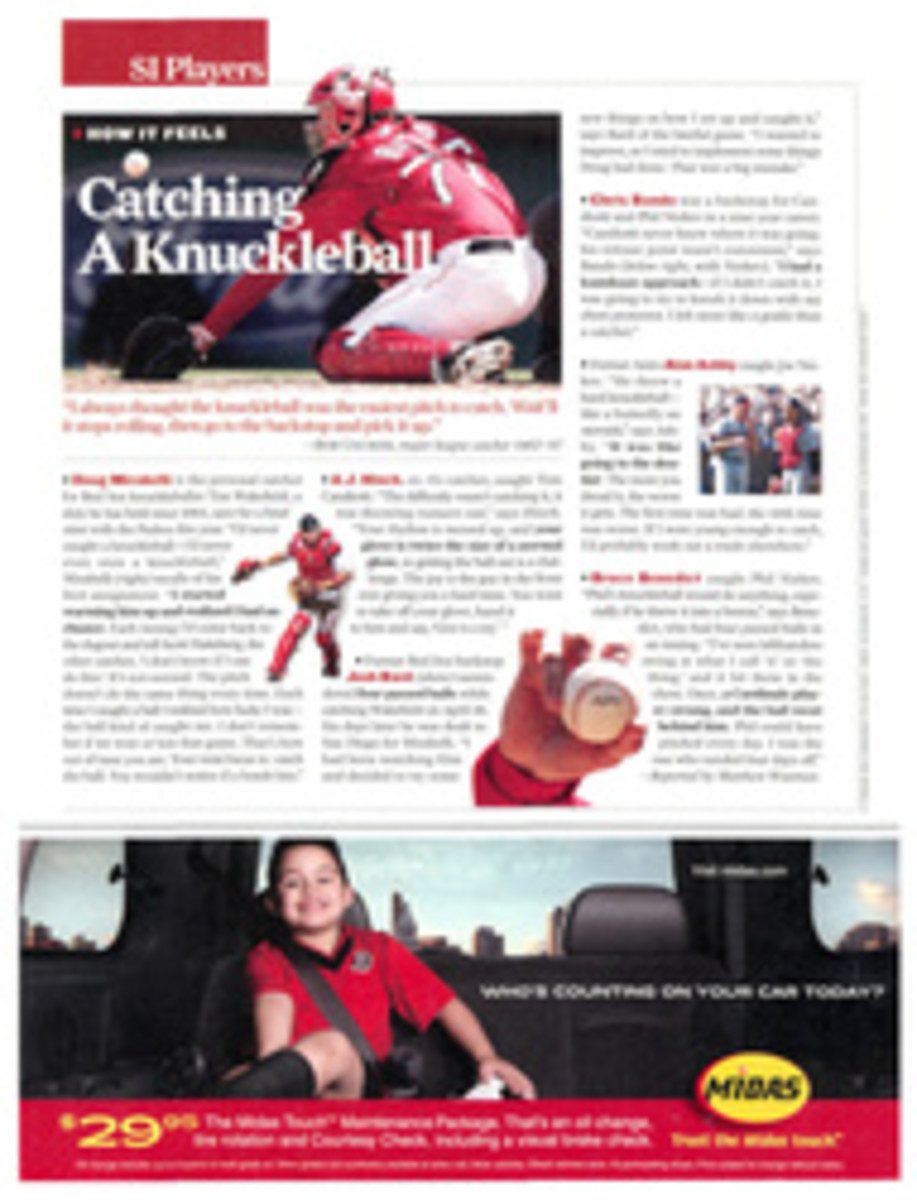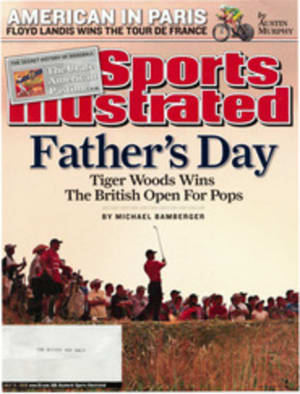
An Unofficial History of Baseball (Orange-Crate Style)
Whoever wants toknow the heart and mind of America had better learn baseball," criticJacques Barzun observed in the 1950s. In his wry and entertaining series, TheUnauthorized History of Baseball in 100-odd Paintings, artist Ben Sakoguchi(right) shows that the converse could also be true.
Unveiled last winter at Los Angeles City College's Da Vinci Gallery,Unauthorized History honors the national pastime's heroes (Babe Ruth, SatchelPaige); skewers its villains (Marge Schott, John Rocker); celebrates itscharacters (Casey Stengel, Bill [Spaceman] Lee); and remembers its tragicfigures (Donnie Moore, Glenn Burke). The images are amusing or provocative--andsometimes both. But what's most striking about Unauthorized History is itslook: the Pasadena, Calif.--based Sakoguchi adapted the style of orange-cratelabels formerly used by California's citrus companies. Beginning in themid-1880s, colorfully illustrated labels adorned millions of wooden orangecrates shipped throughout the world until 1955, when preprinted cardboard boxesreplaced the wooden crates and their elegant lithographs. "The labels havethis unique sense of style, with beautiful colors and eye-catchingtypography," says Gordon McClelland, co-author of California Orange BoxLabels: An Illustrated History. "They were designed to draw youin."
The 67-year-oldSakoguchi recalls seeing the labels on crates outside his parents' smallgrocery store in San Bernardino. Years later, while scouring swap meets nearhis home, he discovered that the 10-by-11-inch images had become covetedcollectibles.
Sakoguchiexperimented with the format and found that the pastoral elements of the labelsmade it easier to tackle controversial topics, including AIDS and 9/11."When I paint with these labels," he says, "it's disarming, nomatter the subject. People don't want to be lectured about politics or race, soI use images and colors that soften the blow."
Always evident inhis art is what Sakoguchi calls his "feeling of otherness," which camefrom his experiences growing up in one of the few Asian-American families inSan Bernardino. In 1942, after Pearl Harbor was attacked, thousands ofAmericans of Japanese descent were relocated to camps. With his parents andthree siblings, three-year-old Ben was interned in Poston, Ariz., for theremainder of the war.
His outsider'sperspective gives his work a political bent. "In baseball, the flaws ofAmerica and the strengths of America come through," Sakoguchi says."Jackie Robinson integrated the game way before the rest of society wasintegrated, but then two players in the Hall of Fame [Tris Speaker and RogersHornsby] were members of the Ku Klux Klan."
Sakoguchi sayshe's a "fan of baseball"--he's particularly fond of the PittsburghPirates, who held their spring training camp in San Bernardino during the early1950s, when Sakoguchi often accompanied his father to exhibition games. "Myfather loved baseball," he says. "These paintings honor hismemory."
Before he retiredin 1997, Sakoguchi spent 33 years teaching art at Pasadena City College--thesame school attended by Jackie Robinson, who appears in several of Sakoguchi'sworks. Now a full-time painter, Sakoguchi recently won a $25,000 grant from theprestigious Flintridge Foundation, and he's already researching his nextorange-crate series, about the history of slavery. But he says he has not yetexhausted the topic of baseball, even though he's now produced more than 140images. "My wife came up with the original title, but we may have to changeit," he jokes. "It's going to be The Unauthorized History of Baseballin 200-odd Paintings."
SI.COM
To see enlarged images from Ben Sakoguchi's Unauthorized History of Baseball,go to SI.com/baseballart.
PHOTO
COURTESY OF BEN SAKOGUCHI
TWENTY ILLUSTRATIONS
REFERENCE PHOTOGRAPHS COURTESY OF NATIONAL BASEBALL HALL OF FAME; AP; BETTMANN/CORBIS; REUTERS; TRANSCENDENTAL GRAPHICS

